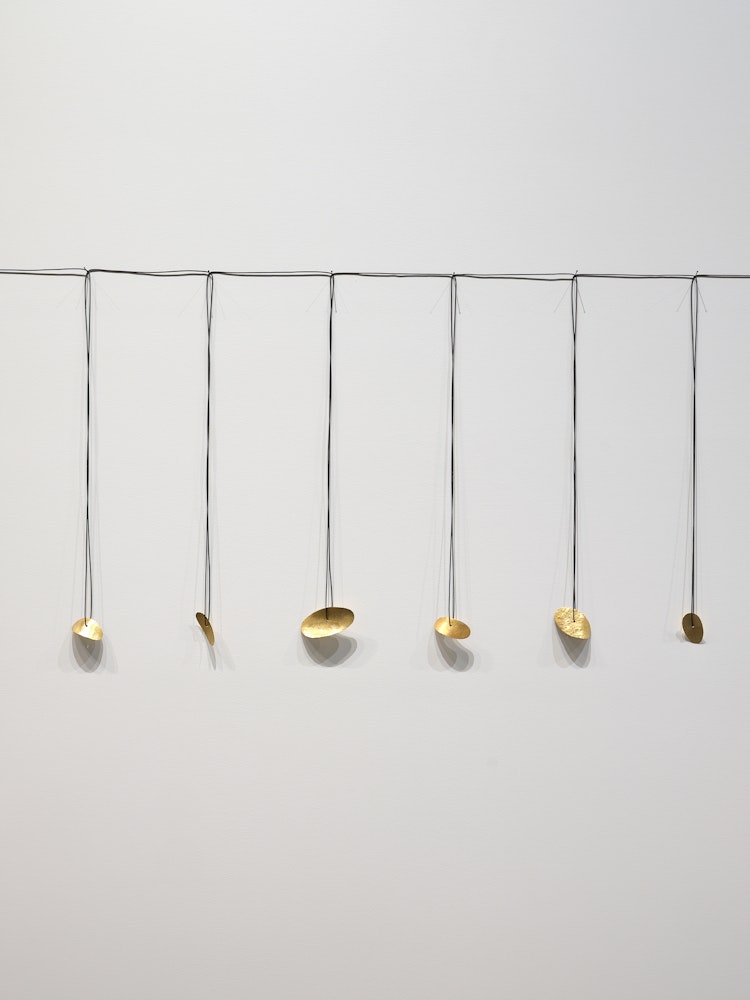

Areta Wilkinson
Whakapapa is a Māori framework that places us within the world. It encompasses all relationships we experience and guides our knowledge and connection to whānau (family), hītori (history), tikanga (customs) and philosophies. In this presentation by artist and jeweller Areta Wilkinson we are introduced to her practice and how reconnecting with her ancestral kāinga (home) has meant connections to deeper material knowledge and understanding.
I grew up in the Far North of Aotearoa New Zealand away from my ancestral kāinga, Rāpaki in Te Waipounamu (the South Island). Ngāi Tahu, my tribal group, has mana whenua connections to Te Waipounamu. Sixteen years ago my partner and I left the north and came down south because I wanted to see how living in the takiwā (area) of my tribe would inform my work. Being on the land, and being in place with those relationships around me.
I began my applied art practice considering Ngāi Tahu whakapapa (genealogy and relationships) which later developed into a Ngāi Tahu methodology. I couldn’t live anywhere else to do this as this meant learning about mātauranga Ngāi Tahu (Ngāi Tahu knoweldge) and consulting with various Ngāi Tahu specialists, including whānau (family) advisors, to help me find the right tikanga (culturally correct methods) for my contemporary practice.
Customary practices value the return of knowledge, so being a member of Ngāi Tahu and Māori community involves responsibility and obligation. Māori whānui (wider community) are doing this all the time – giving back to the community. In turn, if I am benefiting from cultural knowledge, then there is a cultural responsibility to contribute knowledge back. Art practice for me therefore involves being of service to the community as well as appropriately sharing the learning, including the visual outcomes.
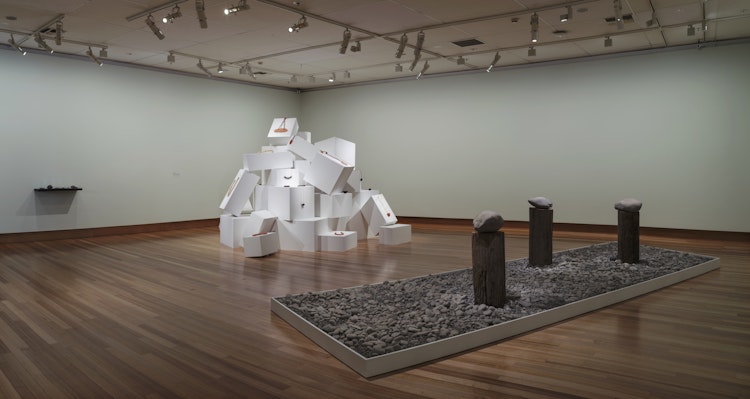
A recent project titled Moa-Hunter Fashions was conceptualised as my mahinga kai, a maker’s space. Customary sites of natural resources and manufacture are called mahinga kai by Ngāi Tahu.
In the exhibition installation a working site is situated on a stony riverbed between mountain and sea. In the body of work, I explore the importance of making relationships, connecting with both an extensive history of Māori makers and their material knowledge.
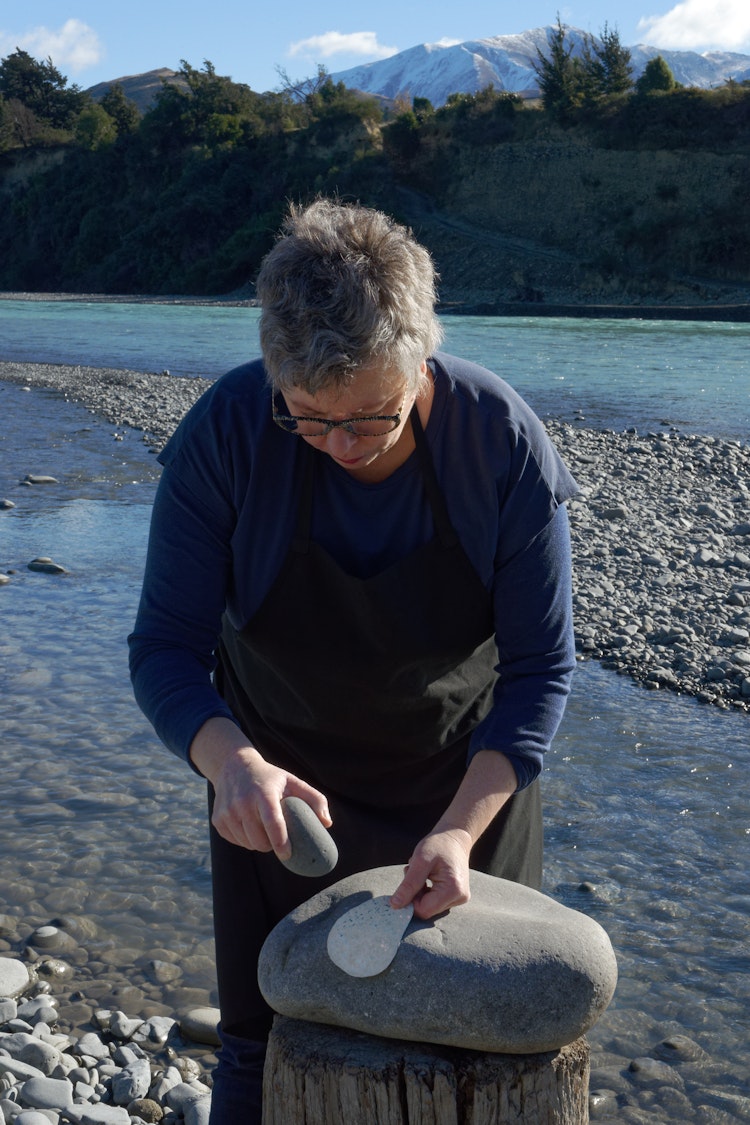
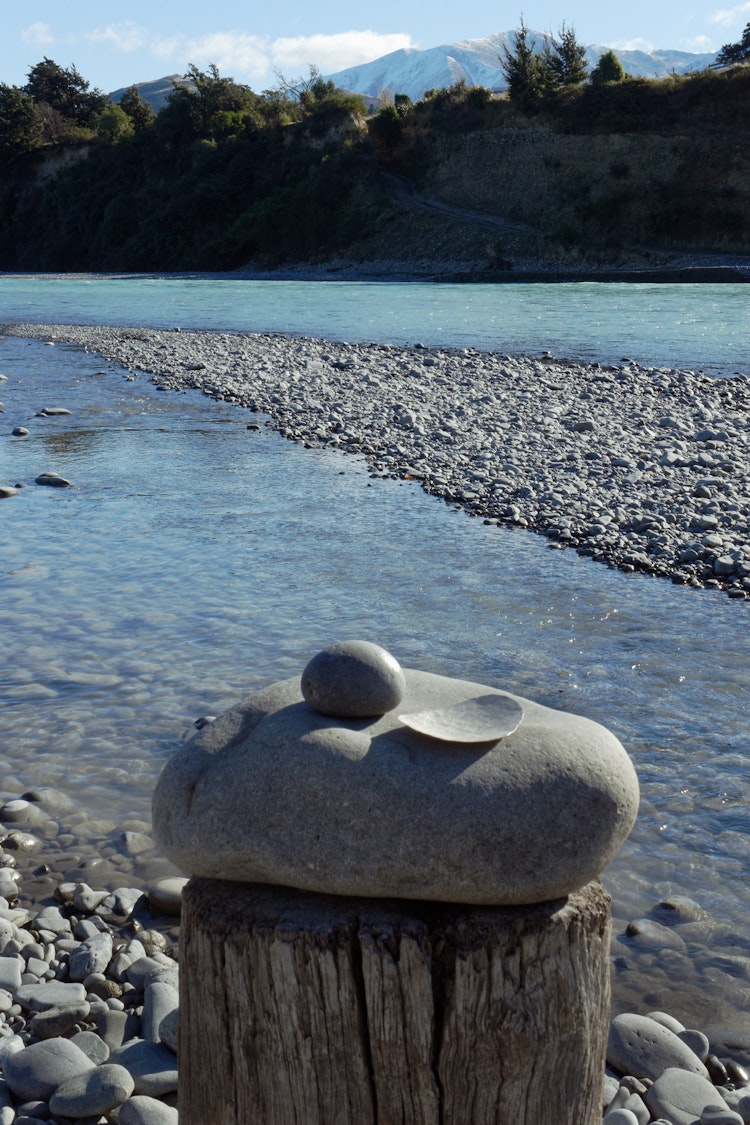
The large braided rivers of Te Waipounamu (the South Island of Aotearoa New Zealand) are identity markers for mana whenua (people with cultural authority in that place). The rivers were and still are mahinga kai, sites for gathering and production of food and natural resources.
I like to think by using stones tools collected from place, the imprint of that stone tool on fine metal creates a ‘land mark’ - transferring a memory of that ancestral riverbed onto my work.
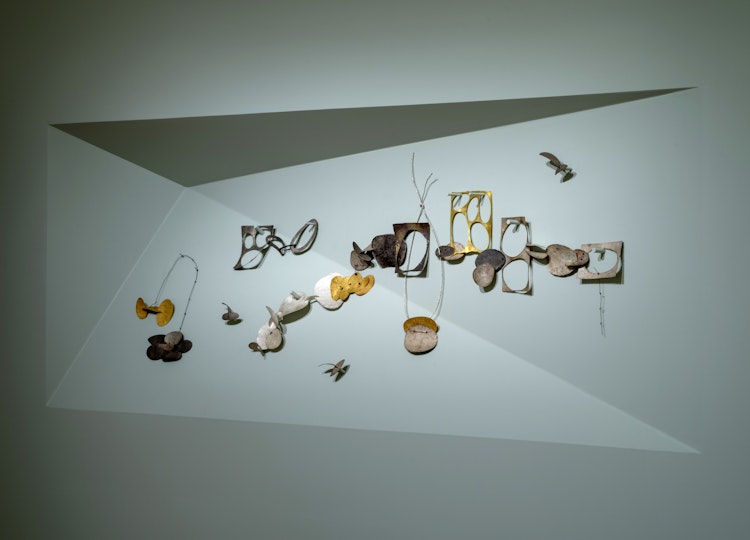
Within the project Moa-Hunter Fashions I use Indigenous materials, local clays and gold, stone technologies, 3D prints of archaic artefacts and photograms of bones from moa-hunter middens. I fashion images and objects that pay tribute to their pasts, recalling whakapapa (genealogical links or connections) and my maker lineage which is located to Te Waipounamu.
In Te Ao Māori (a Māori world) and in Māori creation narratives objects once could speak. Today they are mute though can communicate in other ways. I think of objects as testimony of the knowledge required to make them. They describe a worldview of that time and place.
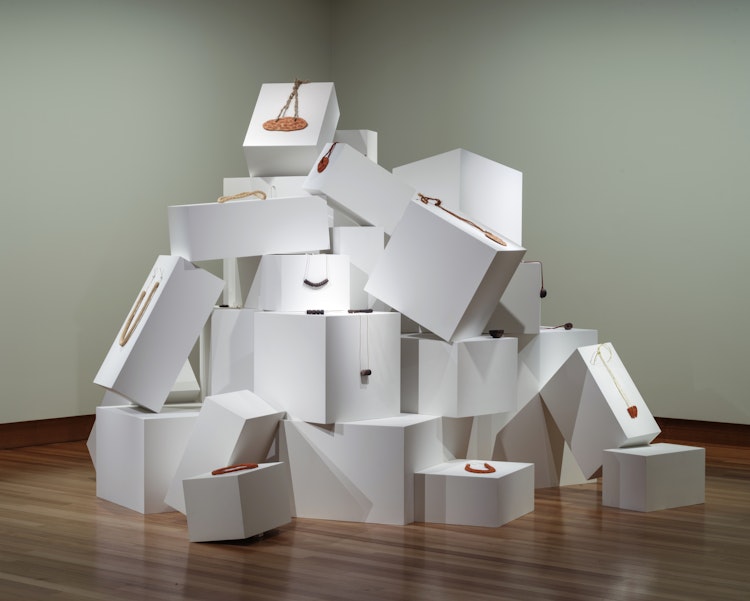
Moa-Hunter Fashions at Christchurch Art Gallery Te Puna Waiwhetū referenced Māori identity markers – whenua and maunga (land and mountain), taonga tūturu (historic cultural object) of personal adornments and auahatanga (creativity) passed on to next generations.
As a Māori artist and jeweller, I activate and reinstate Māori knowledge. This cherishing and generosity can bring relevance and mana (prestige) to Māori ways of knowing.
Cultural aspirations (intangible values) such as transformation and empowerment are at the forefront. In my case this entails an ambition to uplift community through the elevation of (their) Māori knowledge through personal adornment.

The work Whakapapa V displayed on a wall mounted steel shelf references an ancestral toolkit. It includes 3D printed tools from the collection of Museum of Archaeology & Anthropology, University of Cambridge, United Kingdom. The tools originally from Te Waipounamu were sent to the university by Henry Devenish Skinner, the director of Otago University Museum from 1937 to 1953, who swapped artefacts out around the globe.
What is important to me are the 3D printed tools have provenance or a whakapapa – a link between my contemporary practice and practices of old. Then the next important part is I get to do what museums can’t – use the tools.
The ‘ancestral toolkit’ is applied for mark making purposes - to cut, scrape and hammer clay so I can see what marks they can produce. Shapes and forms of the resulting ceramic adornments reference but do not replicate historic Ngāi Tahu visual culture.
A toppling white plinth mountain with ceramic works created using locally sourced clays, featured as part of the installation of Moa-Hunter Fashions.
The ceramic works now have a whakapapa relationship to my 3D printed tools through the tool marks. But the whakapapa links go back to the ancestral implements themselves in the Museum of Archaeology and Anthropology, and then back beyond to the ancestors, the artists who made and used them, then the land from which they are made from. And that’s the stuff that I’m interested in – having those past practices in the picture at the same time that I’m making work today. That relates to the idea of continuum, because it’s not a chronological concept. In the Māori world view time and space can converge, our ancestors can be with us all the time, they are part of the new works story.
This is another way of thinking about things.
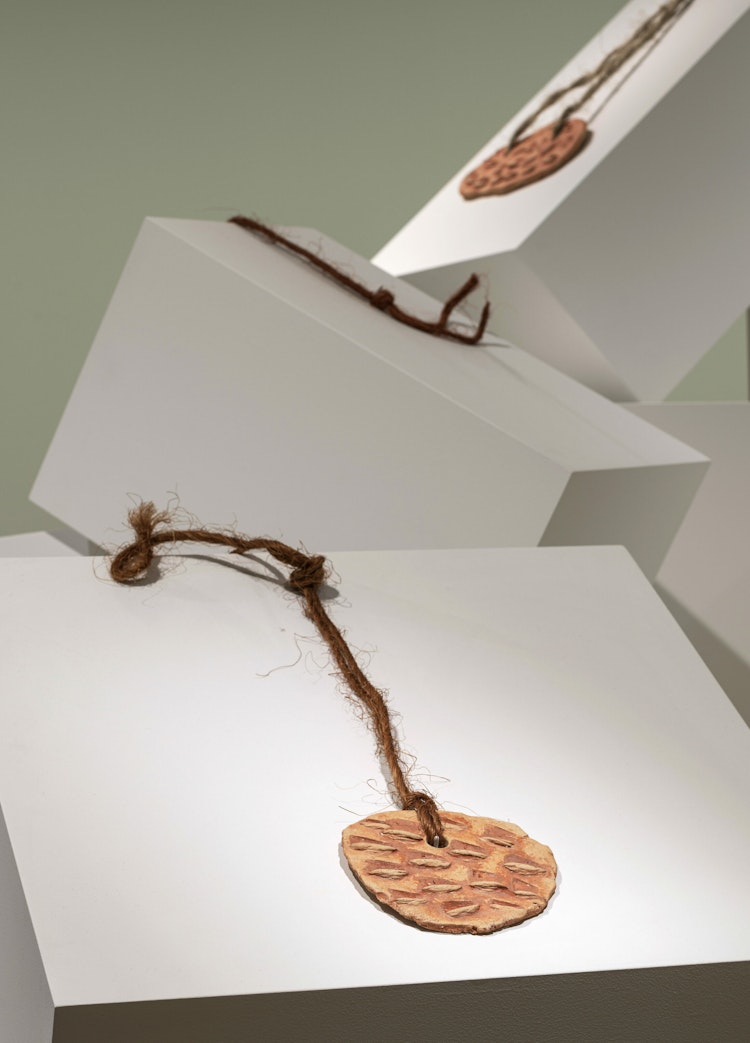
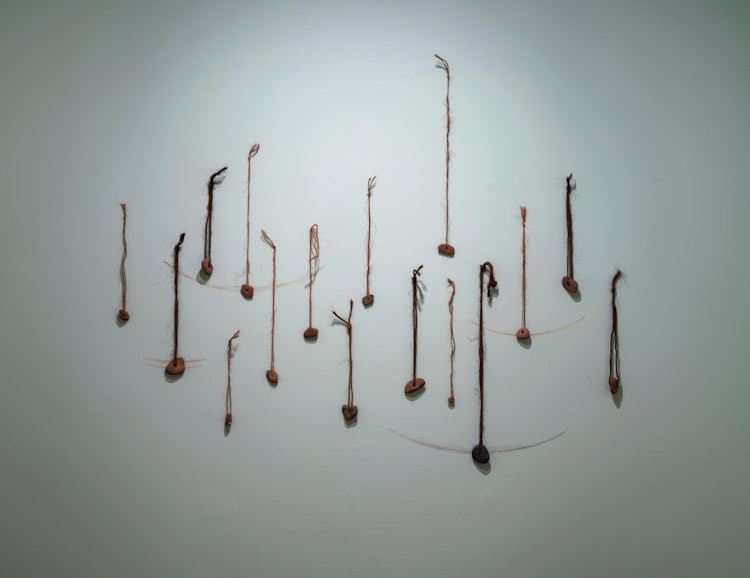
This series of pendants are a tribute to kōkōwai, sacred red ochre pigment that was traditionally drawn and painted on limestone rock shelters in parts of Te Waipounamu and on the body.
Personal adornment was not just about heightened status or beautification, but it was also how Māori moved the things that we needed around.
The simple practice of putting a hole through something with a cord means that you can travel with it, and the pieces did travel; they travelled all over the country and all over the world.
Art making is a vehicle for learning, and through my practice I learn more about these layers of history that relate to Te Waipounamu.
Looking at taonga tūturu, historical objects that our ancestors crafted, those objects are mātauranga Māori, they are the Māori knowledge.
I might not necessarily be able to unlock all that, but there are other ways that I can engage with that knowledge. It’s the method that is critical, if the knowledge is Māori then I assert engagement must happen with Māori, or any other cultural group of the cultural knowledge.
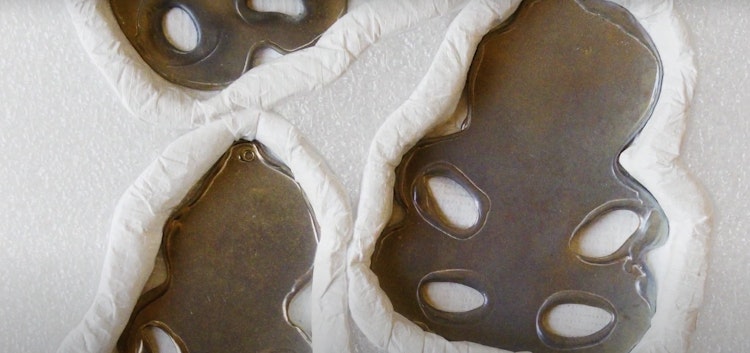
“Who we are, where we are, and what we are”—these are fundamental aspects of existence and identity. In human relationships it helps sometimes to share this background as it can be a way to find a connection and helps explain one’s philosophical positioning.
For Māori, whakapapa is the method for relating, a framework to find connections with all human beings and all life. I would prefer to find a way to relate to others than not.
This is a lifetime’s work, unravelling, understanding more about whakapapa, relationships and interconnection. It will be a continuing thing, there’s lots to learn.
